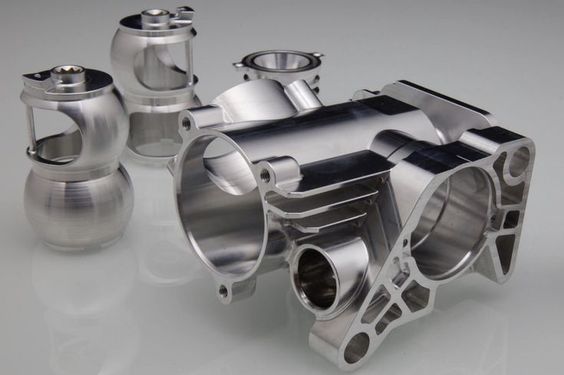In the realm of manufacturing, CNC machining parts have revolutionized the way components are fabricated, offering unparalleled precision, efficiency, and versatility. This article explores the world of CNC machining parts, delving into its processes, applications, benefits, and considerations for businesses seeking high-quality machining solutions.
Introduction to CNC Machining Parts
CNC machining, or Computer Numerical Control machining, is a sophisticated manufacturing process that utilizes computer-controlled machines to precisely cut, shape, and finish materials into custom-designed parts and components. From simple brackets and fasteners to intricate aerospace components and medical implants, CNC machining offers a wide array of applications across various industries.
1. The Significance of CNC Machining Parts
CNC machining parts play a crucial role in modern manufacturing due to several key advantages:
- Precision: CNC machining delivers exceptional precision and accuracy, ensuring tight tolerances and consistent quality in every part produced.
- Efficiency: With automated processes and advanced tooling, CNC machining offers efficient production workflows, enabling rapid prototyping and high-volume production runs.
- Versatility: CNC machining can work with a wide range of materials, including metals, plastics, composites, and ceramics, making it suitable for diverse applications across industries.
Processes of CNC Machining Parts
CNC machining parts involve several key processes tailored to specific manufacturing requirements:
2. Design and Programming
The process begins with the creation of a digital design file using Computer-Aided Design (CAD) software. This design file is then translated into machine-readable instructions using Computer-Aided Manufacturing (CAM) software to program the CNC machine for machining operations.
3. Material Selection and Preparation
The appropriate material is selected based on the desired specifications and requirements of the final part. The material is then prepared for machining, which may involve cutting, sawing, or milling to the appropriate size and shape.
4. Machining Operations
The CNC machine performs a series of machining operations, including milling, drilling, turning, and grinding, to remove material from the workpiece and shape it into the desired form. Advanced tooling and cutting techniques ensure precise and efficient machining processes.
5. Finishing
Once the machining operations are complete, the parts may undergo finishing processes such as deburring, polishing, anodizing, or coating to enhance their surface finish, appearance, and performance.
Applications of CNC Machining Parts
CNC machining parts find applications across various industries and sectors:
6. Aerospace and Defense
In the aerospace and defense industries, CNC machining parts are used to manufacture aircraft components, missile parts, engine components, and structural elements. The precision and reliability of CNC machining are critical for ensuring safety and performance in aerospace applications.
7. Automotive
In the automotive sector, CNC machining parts are employed in the production of engine components, transmission parts, brake systems, and chassis components. CNC machining offers the high precision and durability required for demanding automotive applications.
8. Medical Devices
In the medical device industry, CNC machining parts are used to produce surgical instruments, implants, orthopedic devices, and medical equipment components. The biocompatibility and precision of CNC machining are essential for meeting stringent regulatory requirements and ensuring patient safety.
9. Electronics and Consumer Goods
In the electronics and consumer goods industries, CNC machining parts are utilized in the fabrication of enclosures, connectors, housings, and components for electronic devices and appliances. CNC machining offers the versatility and precision required for complex electronic assemblies.
Benefits of CNC Machining Parts
CNC machining parts offer several key benefits to businesses seeking precision manufacturing solutions:
10. Precision and Accuracy
CNC machining delivers unparalleled precision and accuracy, ensuring tight tolerances and consistent quality in every part produced, even for complex geometries and intricate designs.
11. Efficiency and Cost-Effectiveness
CNC machining offers efficient production workflows, enabling rapid prototyping, quick turnaround times, and streamlined production processes to optimize time and resource utilization, resulting in cost savings for businesses.
12. Versatility and Customization
CNC machining can work with a wide range of materials and geometries, allowing for the production of customized parts to meet specific design requirements and application needs.
13. Quality and Reliability
CNC machining ensures high-quality and reliable parts with consistent performance and durability, meeting the stringent standards and requirements of demanding industries such as aerospace, automotive, and medical devices.
Conclusion
In conclusion, CNC machining parts represent a pinnacle of precision engineering, offering unmatched accuracy, efficiency, and versatility in modern manufacturing. With their diverse applications, benefits, and capabilities, CNC machining parts continue to drive innovation and progress across industries, empowering businesses to achieve excellence in product development and production.
FAQs
- What is CNC machining? CNC machining, or Computer Numerical Control machining, is a sophisticated manufacturing process that utilizes computer-controlled machines to precisely cut, shape, and finish materials into custom-designed parts and components.
- What are the main advantages of CNC machining parts? The main advantages of CNC machining parts include precision, efficiency, versatility, and cost-effectiveness, making them an ideal solution for businesses seeking high-quality machining solutions.
- What industries benefit from CNC machining parts? Industries such as aerospace, automotive, medical devices, electronics, and consumer goods benefit significantly from CNC machining parts, leveraging their precision, reliability, and customization capabilities for various applications.
- What processes are involved in CNC machining parts? The processes of CNC machining parts include design and programming, material selection and preparation, machining operations, and finishing, each tailored to specific manufacturing requirements and desired outcomes.
- How does CNC machining contribute to innovation and progress in manufacturing? CNC machining enables businesses to innovate faster, reduce time-to-market, and create customized solutions that meet specific design requirements and application needs, driving progress and advancement in various industries.
- What considerations should businesses keep in mind when choosing CNC machining services for parts production? Businesses should consider factors such as precision, efficiency, versatility, and quality when choosing CNC machining services for parts production to ensure optimal results and customer satisfaction.

